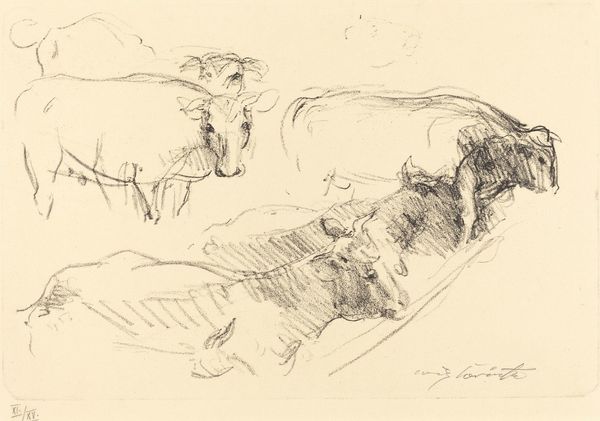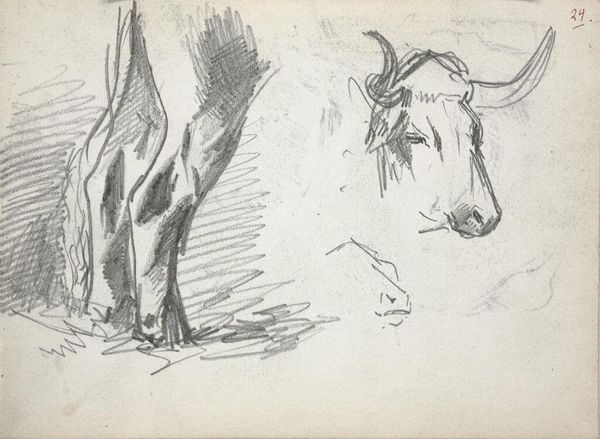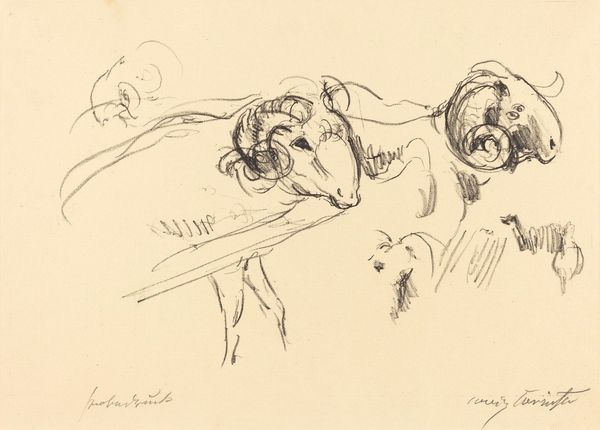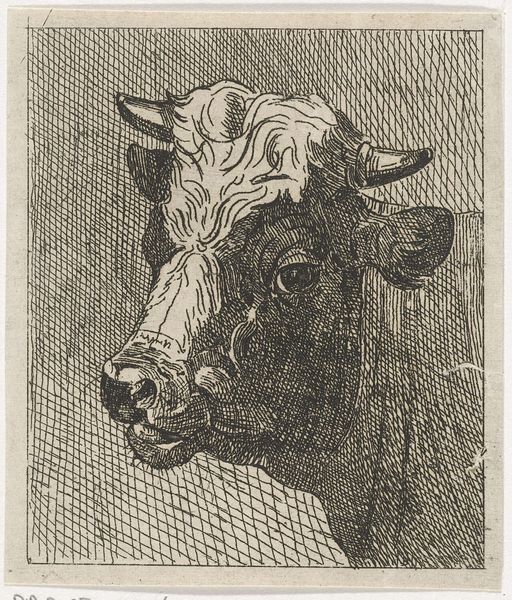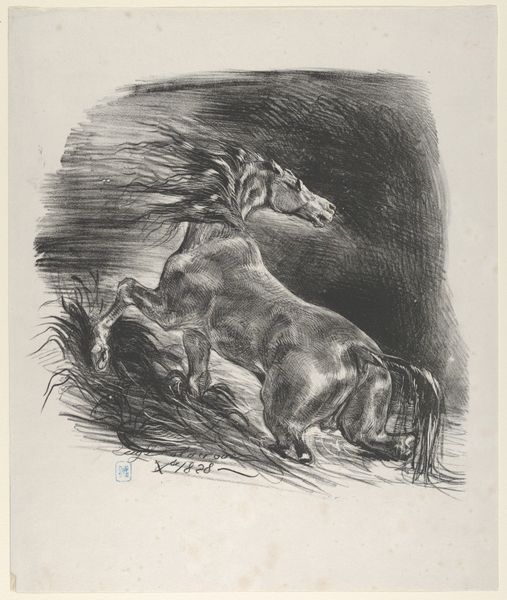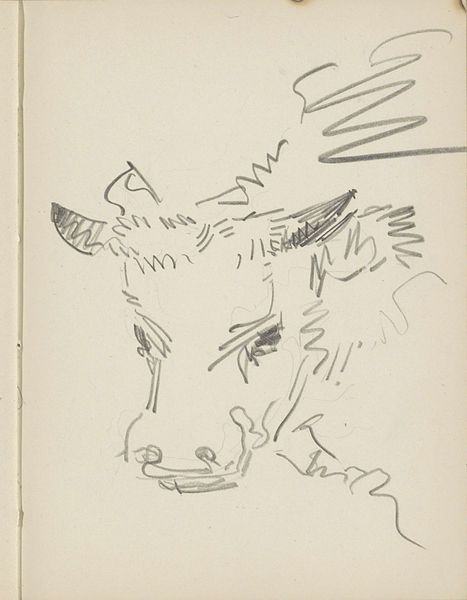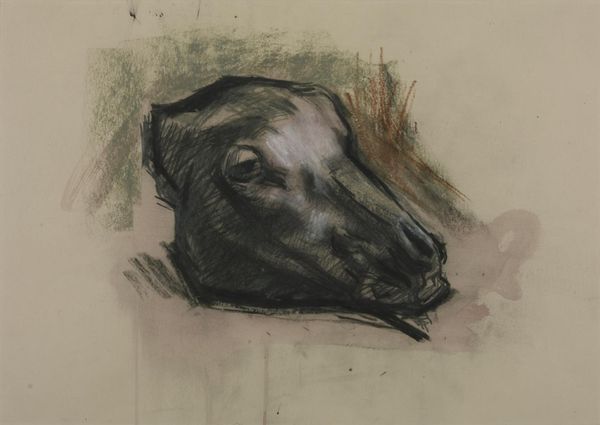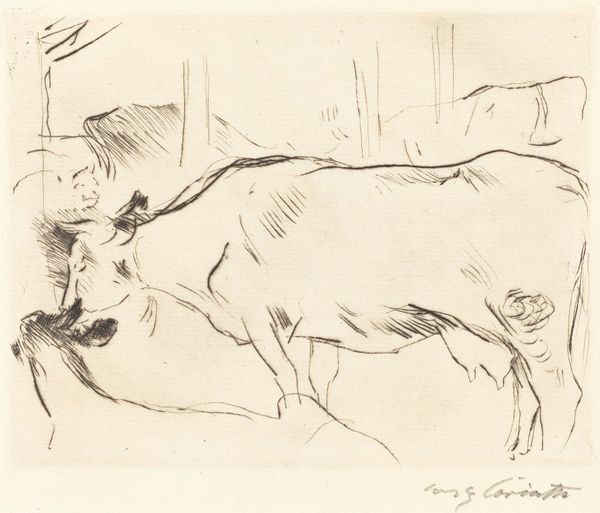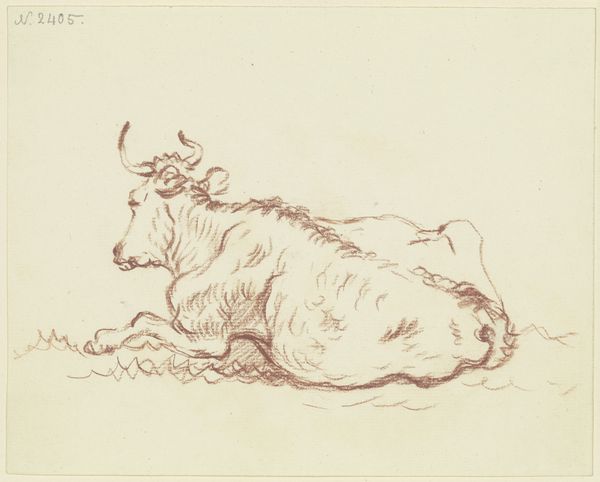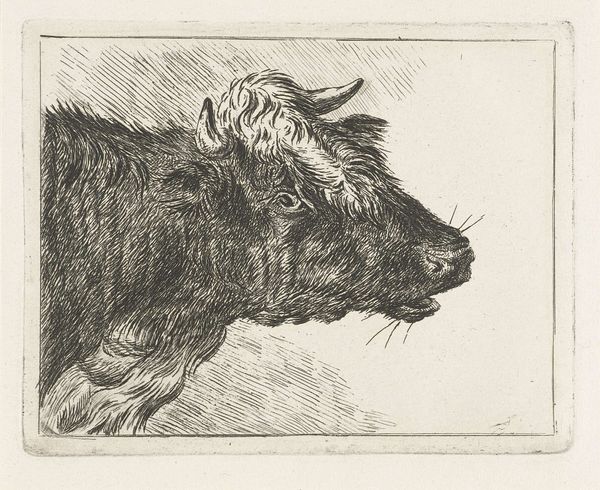
drawing, ink, pencil, pen
#
portrait
#
drawing
#
ink drawing
#
pen sketch
#
pencil sketch
#
german-expressionism
#
ink
#
pencil
#
expressionism
#
pen
#
realism
Copyright: Public Domain: Artvee
Curator: Lovis Corinth’s 1912 drawing, "Head of a Steer," crafted in pencil and ink, is really something. There's a raw immediacy in how the materials come together. Editor: Absolutely. The first thing that hits you is the brute strength it conveys—it's almost a visceral sensation, the way the lines define the weight of that head. I mean, you can almost smell the barn! Curator: And that smell probably permeated Corinth's studio as well, as he wrestled with the beastly materiality of his subject, its animal otherness made tangible through the marks on paper. Look closely at the rapid hatching; there’s a real energy expended. This wasn't some detached exercise; he was deeply involved in the physical process of depiction. Editor: Exactly! You can see the sheer physical effort etched into every stroke. It’s not just observing, it’s participating in some primal energy exchange. Plus, that slight touch of whimsy with the signature at the bottom almost like the steer doodled it. Curator: It's fascinating how this drawing blurs lines between high art and craft, isn’t it? Corinth brings an expressive painterly quality to a 'mere' sketch. His rapid, confident marks and willingness to expose the materiality of ink and paper is key here, the support isn't an invisible, neutral ground. Editor: He captures a raw truth through minimal means, which feels distinctly modern to me. There's no pretense, just honest engagement, like a fleeting moment perfectly preserved in ink. It’s both primal and elegant. Curator: The context of its creation in 1912 also speaks to something, right before the upheavals of WWI—maybe the solidity, the animal strength embodied in the steer, represented some yearning for a stable anchor in turbulent times? Editor: Maybe! Or, maybe it just proves some artists see and connect with animals in ways the rest of us tend to overlook in our civilized routines. Curator: So, thinking about it, seeing Corinth’s study through the lens of its materials and its era reveals much about not just what, but *how* it communicates. Editor: Agreed. And for me, at least, I walk away from this thinking more about seeing something really big and breathing. Makes you remember how close we all still are to the wild world, really.
Comments
No comments
Be the first to comment and join the conversation on the ultimate creative platform.

